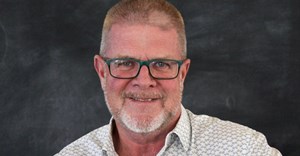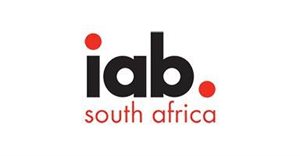Trending





 Era of first-party data dawns as the data cookie crumblesLindsey Schutters
Era of first-party data dawns as the data cookie crumblesLindsey Schutters
#DesignIndaba2018: Getting smarter at partnering by design

Launched in 2008, the Cape-Town based education technology company has grown to a team of 350 staff members across three continents and was acquired last year by Nasdaq-listed education technology firm 2U for $103m (R1.4bn). But the road hasn’t been an easy one. In 2013, they realised that they would need to make some changes if the business was to survive. Back then, their planning “lived in corridors” – they would make decisions on the go which they soon realised wasn’t working, and it was only when they were advised by a business leader in the US to read Mastering the Rockefeller Habits: What You Must Do to Increase the Value of Your Growing Firm by Verne Harnish, and told to do 90% of what Harnish suggests, that the company really started to take off.
But first, a bit of background as to how GetSmarter operates. It has partnered with over 10 of the world’s leading universities across 3 continents to offer a portfolio of 80 online short courses to “upwardly-mobile, career-advancing working professionals” in 140 countries. To date, it’s educated over 50,000 students, of which the average age is 38, and has achieved a 91% completion rate, which is a stark contrast to the low, single-digit completion rates typical of distance learning.
This is where the decision to partner with their students to offer a better education comes in, and Rob explained exactly how they do this...
Why is it that the promise of distance education is so tragically unrealised? How many thousands, if not millions, of working professionals, are engaging in distance learning programmes every single year? And only a fraction of them are completing.It's these questions they asked themselves and sought to find a solution to. “300,000 students will register with Unisa this year,” he said, “and only 9% of those students will graduate – this is an astonishing number and I’m not picking on Unisa specifically, but I am being very clear that we have a problem that relates to distance education, and this is one of the things that GetSmarter sought to solve.”
Looking at a model used by a UK-based university, they noticed that in its one-year postgraduate programme that had a 22% completion rate, the researchers had only changed one variable and that was to make a phone call at the beginning of the programme. That one phone call from an administrator connecting with a student, welcoming the student onto the programme and orientating them as to what the next few weeks would look like, increased the completion rate by 4.3%. The following year, the university decided to add ongoing phone and email contact, which increased the completion rate by 40%, and it's this case study that led GetSmarter to employ the concept of a high-touch approach to online education.
“The fact that tech allows you to augment the role of people in the learning process and not replace them was one of the key insights, and by putting people back in the centre of learning in the digital context, we were able to drive completion rates right forward,” Rob said.
He provided a brief overview of what this looks like at GetSmarter: Their students, often in large student cohorts of 1,000+ at times, are immediately placed into small tutorial groups of 6-14 students, supported extensively by tutors throughout the process. The tutors are subject matter experts that guide the students’ project work, mark their assignments and give them rich feedback as they progress throughout the course.
The second critical stakeholder is the success manager – the equivalent of a private banker for education, explained Rob. “They’re your one-stop shop, they are deeply invested in your learning, they are actively tracking and monitoring your learning as you progress and practically intervening to keep you on track.”
It is this partnering with their students through these open involvement, highly engaging programmes that they believe has contributed to its exceptionally high completion rate in a distance learning context.
Get Smarter founders before n after pics.... Nice guys. #DesignIndaba pic.twitter.com/Fn6Wc7LYSL
— Tholang Hlitana (@teepeehlitana) February 21, 2018
Sam went on to explain how they’ve also partnered with the rest of their company by quite literally getting on the same page, using a design tool like the one-page strategy plan (OPSP).
The challenge of business is to find a way to have the right people doing the right things right... and this comes down to culture, strategy and execution.Speaking of execution, they found that their OPSP has given them a common vocabulary. “This format allows us to think together, as a broader executive team and as an organisation, to take this business that back in 2013 with 70 people in size was almost falling over and turn it into something which could become a future powerhouse in the Cape Town environment to show the world that Cape Town is capable of not only playing on this stage but also winning.”
The format is simple. You can compile this plan by answering a series of questions:
Who we are?
“A simple statement of who’s on the bus… that you can hold yourself accountable to.” And it’s important that you pay attention to the right detail here. Some of the things that GetSmarter noted here are that they’re honest and straightforward, that relationships matter, and of course their galvanising value that they play to win.
Why do we exist?
“This touches on the issue of purpose, often answered by spiritual practices. But in an organisation, there are so many purposes…” So, ask yourself, ‘What is your united value that makes you feel like you are serving a higher purpose?’ For GetSmarter, it’s to improve people’s lives through better education.
Where do we play?
This is answered by three categories: product, geography and customer. “We operate short courses, our geography is where our university partners have recognition value, and our customer is the upwardly-mobile working professional,” explained Sam.
How do we win?
GetSmarter defines how they win as helping their students feel like they stand out from the crowd. “We are helping people build competence, confidence and recognition and that helps them feel like they stand out by differentiating themselves in a crowded marketplace and in mastering their careers.”
What must we do this year?
Here, you need to define the key things you do based on the above criteria, and you need to jostle about these, said Sam, because you can’t do everything.
What must I do in the next 90 days?
Everyone in the team should have 90-day priorities. They need to ask themselves, ‘What 3-5 things in 90 days will help this business achieve its one-year priorities?’, all in reference to the overall strategic plan.
“These are deep searching questions that take some time to find and they actually evolved for GetSmarter over the past 3 or 4 years since implementing it, said Sam.
We started in a very different place to where we are today, but that’s the power of collective, partner thinking; you get to think together – it doesn’t rest aside one executive’s head in an ivory tower locked away for the rest of the business, inaccessible in a way that allows you to feel like you’re part of that business.What Sam loves most about this plan is its wide application to any organisation or institution, from businesses to sports teams to churches, and he’s found it particularly useful for his family as well. “It gives us the chance to partner together in a way that doesn’t just exist in a set of assumptions that exist between people but allows you to be very deliberate about it. It’s been the most incredible way for GetSmarter and more recently my personal family to partner through design.”
GetSmarter's big, hairy, audacious goal is to educate and improve 1 million lives by 2030, and the way things are going, they expect to achieve this much sooner. Watch this space…
For more, go to GetSmarter's press office on Bizcommunity and keep an eye on our Design Indaba special section for our coverage throughout the Festival, which will all be packed in our Design Indaba newsletter, so also look out for that on Monday.












